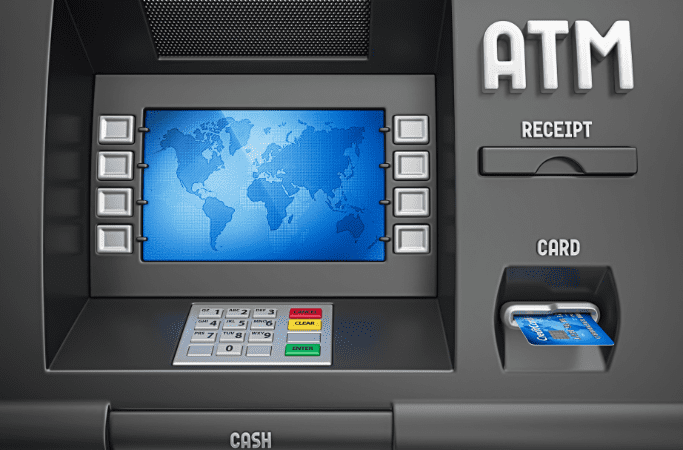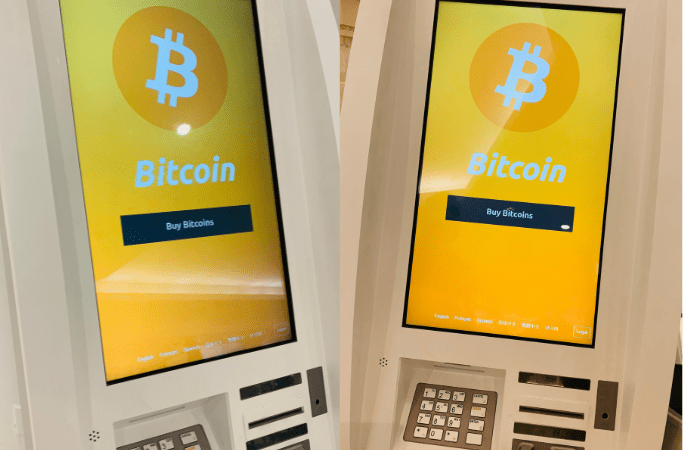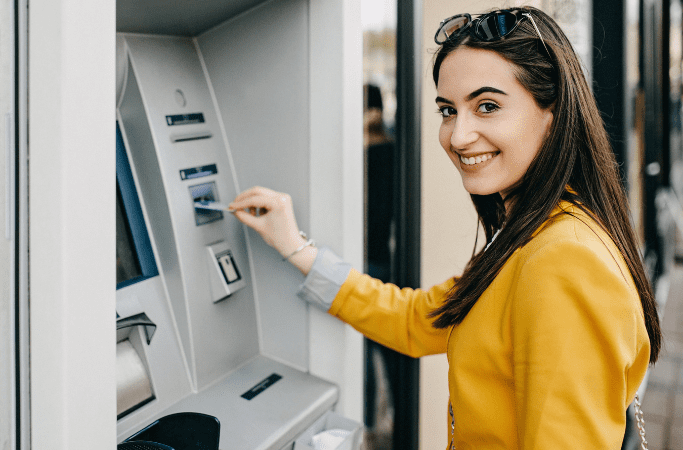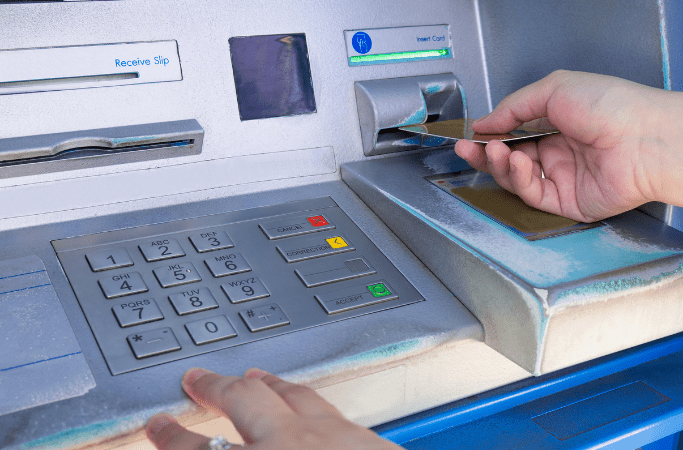Crypto ATMs have ushered in a transformative era in the handling of digital currencies. Standing distinct from traditional ATMs, they serve as a crucial link, seamlessly connecting the realm of digital currency with the tangible world of physical cash. These machines are not just limited to Bitcoin; they encompass a range of cryptocurrency ATMs, broadening the scope for users to efficiently buy bitcoin, sell crypto, and conduct various financial transactions in the expanding universe of cryptocurrencies.
The introduction of Bitcoin ATMs has particularly marked a significant shift in the accessibility and usability of cryptocurrencies. They eliminate the complexity often associated with digital currency transactions, offering a user-friendly interface that simplifies the process of buying and selling Bitcoin. This evolution represents a significant leap forward in integrating cryptocurrencies into everyday financial practices, making them more approachable and practical for the general public.
The Growth of Bitcoin ATMs

The global landscape of Bitcoin ATMs has witnessed a remarkable surge, showcasing a robust growth trend. Today’s count stands at an impressive tens of thousands, signaling a strong upswing in user demand for these machines. This proliferation of Bitcoin ATMs mirrors the rising interest and adoption of cryptocurrencies across various demographics and regions.
Key players in this expanding market, such as Bitcoin Depot and Coin Cloud ATMs, are at the forefront, driving the increase in Bitcoin ATM installations. Their role as Bitcoin ATM operators has been pivotal in enhancing accessibility and convenience for users looking to engage in Bitcoin transactions. This growth not only reflects the escalating popularity of Bitcoin but also underscores the evolving landscape of digital finance.
Also Read: Bitcoin For Dummies – Ultimate Guide for Beginners
How Bitcoin ATMs Work

Operating a Bitcoin ATM is a user-friendly experience, designed for ease and efficiency. Users can engage in a variety of transactions, including the ability to deposit cash, purchase Bitcoin, or sell Bitcoin. The process is simple: it starts with scanning a QR code from the user’s digital wallet, followed by the option to either insert cash or use a debit card. This straightforward approach makes Bitcoin transactions accessible to a broader audience.
Once the initial steps are completed, the Bitcoin ATM efficiently processes the transaction, whether it’s for buying or selling Bitcoin. This functionality not only brings convenience to the users but also contributes to the growing acceptance and use of Bitcoin in everyday financial activities. The ease of these transactions represents a significant milestone in the integration of cryptocurrencies into the mainstream financial ecosystem.
Convenience and Accessibility

Bitcoin machines stand out for their exceptional convenience, making the acquisition and management of cryptocurrencies more accessible than ever. Strategically placed in various public locations such as gas stations and CDReload locations, these machines significantly simplify the process of buying Bitcoin and accessing a range of other cryptocurrencies. Their widespread presence caters to a diverse user base, from seasoned investors to those newly exploring the realm of digital finance.
This increased accessibility plays a crucial role in enhancing personal finance management for individuals who opt for digital currency over traditional bank accounts. The availability of Bitcoin machines in everyday settings not only democratizes access to digital currencies but also integrates them seamlessly into daily financial activities. This integration is a key factor in the growing adoption and normalization of cryptocurrency as a viable and practical financial resource.
Financial Transactions and Security
In the realm of financial transactions, particularly at Crypto ATMs, security holds utmost importance. These ATMs are equipped with multiple security measures to protect both the transaction and the user’s sensitive information. This comprehensive approach to security plays a pivotal role in establishing trust and reliability for users engaging in cryptocurrency transactions, whether it’s buying, selling, or exchanging digital currencies.
However, users should be cognizant of the high fees and transaction fees that some Crypto ATMs might impose. These fees can vary significantly between different machines and locations, potentially impacting the overall cost of transactions. It’s essential for users to be informed and compare fees across various ATMs, ensuring they get the best possible deal while engaging in their crypto transactions.
Regulatory Compliance and Money Laundering
The rise of Bitcoin ATMs has brought increased scrutiny regarding money laundering risks, prompting stringent regulatory compliance measures for operators. To combat potential illicit activities, Bitcoin ATM operators are mandated to adhere strictly to laws like the Bank Secrecy Act. This adherence is crucial in safeguarding the system against misuse for money laundering and other illegal transactions.
These regulations ensure that Bitcoin ATM transactions remain both safe and legal, thereby maintaining the integrity of the financial system. Operators are required to implement robust verification and monitoring processes to detect and prevent unlawful activities. This regulatory compliance not only protects users but also fortifies the trust and reliability of using Bitcoin ATMs for legitimate financial transactions.
Bitcoin ATMs vs. Traditional ATMs

When contrasting Bitcoin ATMs with traditional ATMs, the key difference lies in their respective functionalities and connectivity. Traditional ATMs are directly tied to a user’s bank account, facilitating standard banking transactions like cash withdrawals, deposits, and account inquiries. They operate within the established banking system, providing a direct link between physical cash and bank-held funds.
In contrast, Bitcoin ATMs function by interfacing with a digital wallet, not a bank account. These ATMs specialize in cryptocurrency transactions, allowing users to buy or sell Bitcoin and other digital currencies. Instead of handling bank account funds, they deal exclusively with cryptocurrencies, converting digital assets into physical cash or vice versa. This distinction underscores the unique role of Bitcoin ATMs in bridging the gap between the digital currency world and traditional financial systems.
Security Risks and Considerations
Bitcoin ATMs, despite their convenience and ease of use, are not exempt from security risks. Users must exercise caution, especially in protecting their wallet address and private information. The nature of these transactions, often involving significant amounts of money and sensitive data, makes them a potential target for fraudulent activities and security breaches. It’s crucial for users to be vigilant, ensuring that their interactions with Bitcoin ATMs are secure and their data remains confidential.
To mitigate these risks, users should adopt robust security practices such as using strong, unique passwords for their digital wallets and being aware of their surroundings when using Bitcoin ATMs. Additionally, it’s advisable to use ATMs from reputable operators and in secure locations. By taking these precautions, users can significantly reduce the risk of compromising their financial and personal information, ensuring a safer experience with Bitcoin ATMs.
Conclusion
The widespread expansion of Crypto ATMs is a clear indicator of the increasing integration of cryptocurrency into mainstream finance. These ATMs serve as physical gateways to the digital currency world, offering easy and convenient access to Bitcoin and other cryptocurrencies. Their growing presence in public spaces, from shopping centers to transportation hubs, is not just about accessibility; it symbolizes the gradual normalization and acceptance of digital currencies in everyday financial transactions and investment portfolios.
This burgeoning network of Crypto ATMs plays a pivotal role in fostering the broader adoption of cryptocurrencies. By simplifying the process of buying, selling, and exchanging cryptocurrencies, they are making these digital assets more approachable to the general public. This ease of access is crucial in breaking down barriers to entry, encouraging more individuals to explore and engage with the world of cryptocurrencies. As Crypto ATMs become more commonplace, they are set to further propel the integration of digital currencies into the fabric of daily financial dealings.
Also Read: What Is KYC Crypto
FAQs
How Do I Use a Bitcoin ATM?
Using a Bitcoin ATM involves a few simple steps: First, verify your identity as required by the machine. Next, select the transaction type (buy or sell Bitcoin). For buying, scan your Bitcoin wallet QR code and insert cash; for selling, send Bitcoin to the provided address and withdraw cash. Finally, confirm the transaction and complete the process.
Are Bitcoin ATMs Safe to Use?
Yes, Bitcoin ATMs are generally safe when used correctly. They employ various security measures to protect transactions. However, users should be vigilant about protecting their private information, use ATMs in secure locations, and ensure they are transacting through reputable Bitcoin ATM operators.
What Are the Fees for Using a Bitcoin ATM?
The fees for using a Bitcoin ATM can vary depending on the operator and location, typically ranging from 5% to 10% per transaction. Users are advised to check the specific fees at each Bitcoin ATM before completing a transaction.



